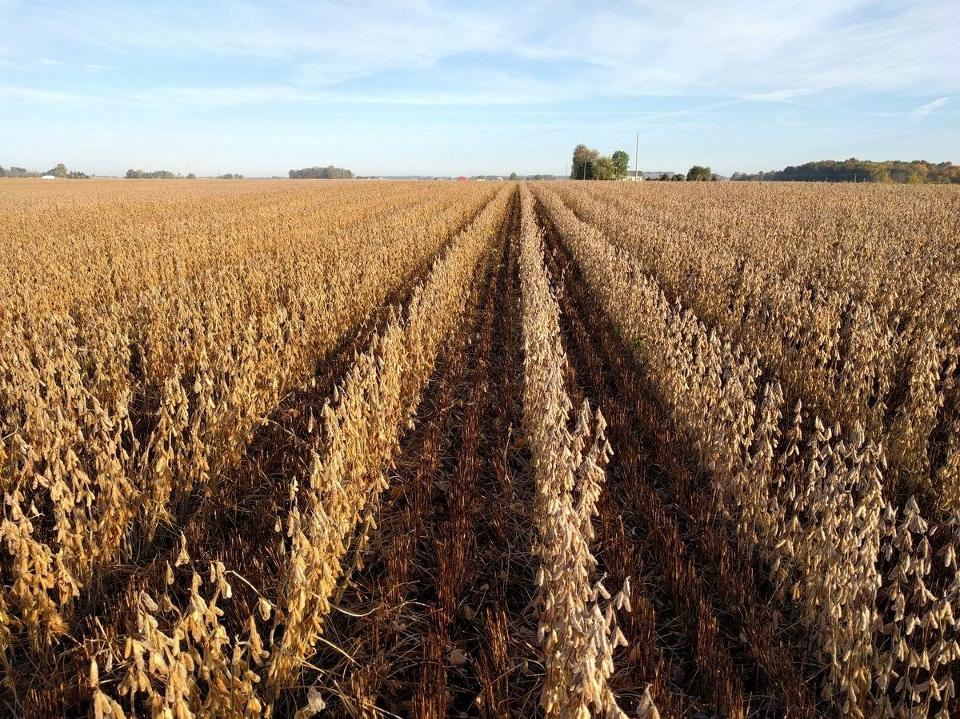Farmer Sheds Light On NYT 'Doubts About The Promised Bounty Of GM Crops'
This post was originally on Forbes on November 11, 2016.
Post written by Brian Scott. Brian Scott farms just over 2,200 acres in Indiana with his father and grandfather, where they raise corn, soybeans, popcorn, and wheat.
GMO Answers is launching a two-part series in response to recent claims regarding the benefits of GMOs and GM technology. This post is our second installment.

A recent article in the New York Times by Danny Hakim claims genetically modified (GMO) crops have not led to increased yields or reduced pesticide use. The general idea of the article is that the United States and Canada, where GMOs are widely adopted, have not shown great improvements in these areas when compared to countries of Western Europe where there is far less adoption of GMOs. I won’t disregard this claim as being totally wrong, but I am inclined to shed some light on it from my perspective.
I farm. I raise corn and soybeans in Indiana. All my soybeans are Roundup Ready. Half of my corn is genetically modified with various traits for herbicide tolerance and insect resistance. The other half of my corn is not. I grow popcorn as well, and seeing as there is no GMO popcorn, closer to two-thirds of my corn/popcorn crop is non-GMO. I’ve seen on my own farm how conventional corn yields on par with my GMO corn, so I don’t doubt Europe can keep pace with us on yield. The farmers over there aren’t exactly slouches. Two months ago I was in Germany where I visited a few farms. The farmers I met there are every bit as intelligent and capable as the farmers over here. But none of the modified corn I buy contains a trait to increase yield. There is no trait for an intrinsic yield increase available. Monsanto’s Genuity Roundup Ready 2 Yield soybeans are the only exception I know to this rule. Aside from those beans, GM traits on the market right now protect yield potential of crops during times of stress, which is a wholly different thing than directly increasing yield. I know this when I buy seed each season. I don’t buy Bt corn with a clear expectation it will increase my yields. I buy it knowing if I have an economic level of infestation from the particular insect targeted by a particular Bt trait, I will protect the yield in that situation. All my GMO corn is Roundup Ready, yet I almost never spray glyphosate on it. What GM traits do for me is put additional tools in my pest management toolbox that will be there if I need them.
Western Europe, Canada and the United States all are top-notch ag producers. They have access to the latest and greatest innovations in equipment and technology. Whether or not farmers in those regions are using GMO technology, they are managing their weed, insect and disease pressures in other ways. All my seed is treated with a coating offering young plants protection from bugs, disease, or nematodes. Often the treatment is a combination of these. On my farm, we have actually backed off buying Bt traits because, honestly, we have not been experiencing pest pressure at economically damaging levels for a few years. Go a little bit West to Illinois or Iowa and you’ll get a different story.
Crop rotation plays a big part in pest management as does choosing how much to till or not. I think the Times piece lacks a key element in not discussing tillage. I would like to see an in-depth look at the adoption of no-till in countries with wide acceptance of genetically modified crops versus countries where these crops aren’t used. Reduction or elimination of tillage is used on the most acres in North and South America where GMO corn and soy are most prevalent. Biotechnology isn’t the only cause to rising no-till acreage, but having a trait on hand to combat a tough weeds with herbicide versus using a tillage tool doesn’t hurt. Tillage can be one of biggest users of labor and fuel on a farm. Because weeds are tough to control in conventional soybeans, we often tilled before even planting up to three times ahead of soybeans. Since the advent of herbicide tolerant traits in soybeans, we till ahead of beans once or not at all. The point is there are benefits to GMO other than yield.
There are some items in Hakim’s piece I agree with. Fears about human health brought about by the consumption of GM foods have largely been proven unfounded. In developing countries that lack access to equipment and technology readily used by farmers in the United States and Europe, the benefit of GMO crops may initially be greater. If a farmer gains access to Bt cotton, and that farmer is able to rely on a gene in the cotton plant protecting the crop from insects, moving away from spraying by hand with a backpack sprayer yield, farm worker safety is likely improved. Andrew Kniss has a great piece on his blog discussing pesticide use at it relates to the Times article.
Hakim quotes a farmer who says GMO is not a silver bullet solution. I totally agree. Farming takes place outdoors in a never ending array of events that can give you a good crop or a bad crop. No one single thing a farmer does will be a solution to all of it. Farming doesn’t take place in a vacuum. There are endless variables like weather, pest populations, soil type, finances, and more that come into play. In my opinion as a farmer, the general idea of just one aspect of crop production (GMOs) being responsible for yield increases or pesticide use decreases leaves too many other variables on the table.